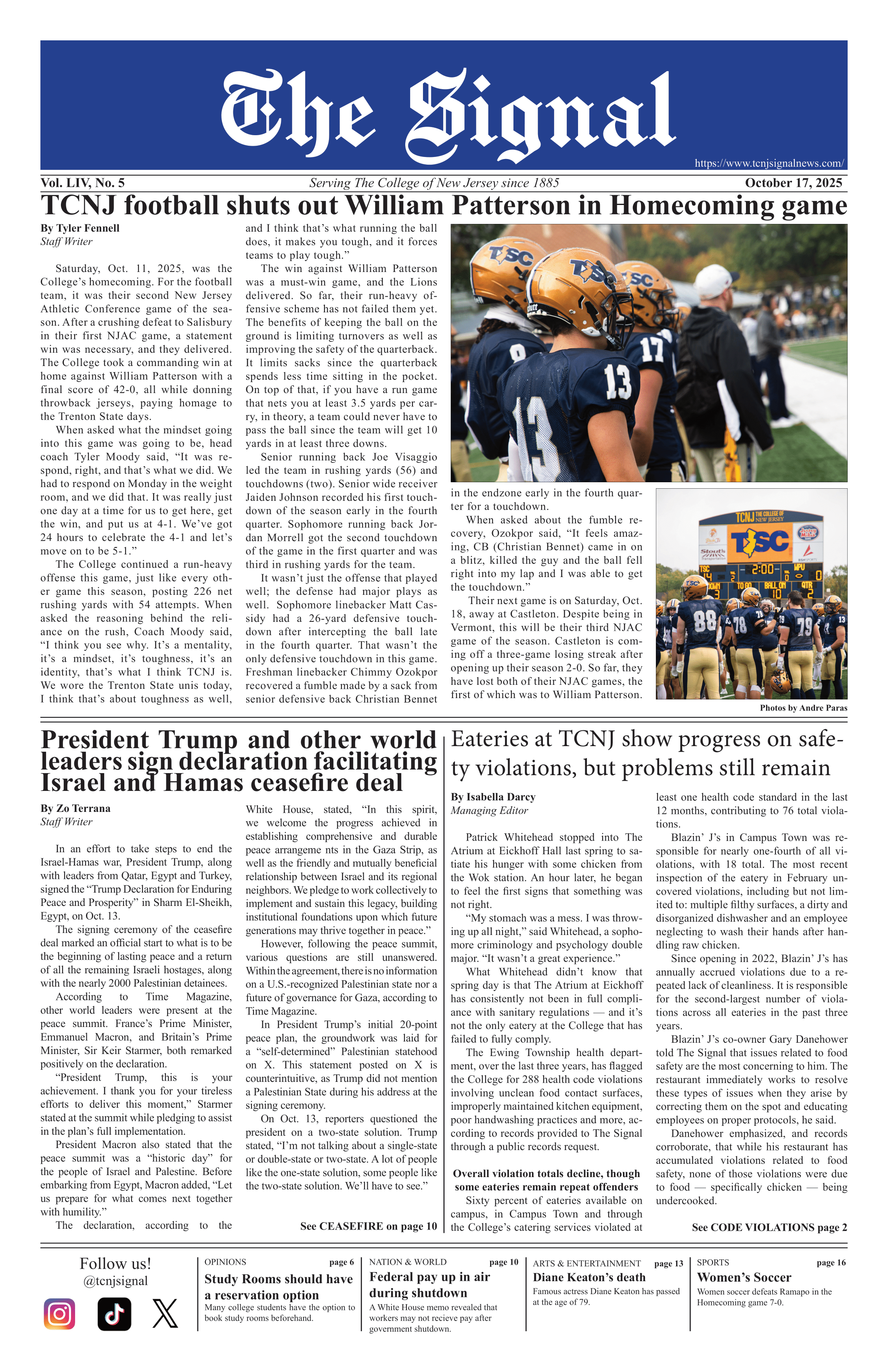By Julie Burke
Correspondent
Students learned a new word on Friday, Feb. 3 — “umwelt.”
Anne Leonard, an assistant professor of ecology evolution and conservation biology at the University of Nevada, Reno, explained the term at the College’s first Brown Bag of the semester, “Exploring the sensory world of bees through science and art.”
The term refers to the different ways animals experience the world — a key component of Leonard’s research.
Leonard used the example of a meadow occupied by both a human and a tick to explain “umwelt.” While the human appreciates the meadow’s beauty, the tick appreciates the human based on butyric acid, which creates a scent indicating a mammal is present, as well as the temperature and placement of hair — or lack thereof — on the human’s body.
The warmth, butyric acid and lack of hair indicate prime spots for ticks.
Leonard’s research aims to understand a bee’s umwelt, or how they process floral information for pollination. She talked about her interest in the complex functions of floral signals, of which there are two categories: floral signal complexities and floral reward complexities.

For bees, the act of pollination involves a lot of sensory input. Leonard described it as “a multisensory experience that incorporates gustatory, tactile, olfactory and visual components.”
Leonard discovered how bees use their senses during pollination by manipulating nectar — some nectar would give the bee a high reward, a medium reward, no reward or a toxic reaction. Toxic nectar was dusted with unpleasing substances like nicotine.
Leonard also explained the plant’s perspective during pollination — plants need the bees to carry their nectar and pollinate the same plant type.
“(It’s) beneficial to the plant to produce a pleasuring floral display,” Leonard said.
Leonard explained the work in her lab experiments in Reno, Nev., used East Coast bumble bees in her experiments. Leonard said bumble bees, which are native to North America, are on the decline. Leonard also noted how the East Coast bumble bees are compact and live within a small colony.
Although the bumble bees used in the lab never encountered an actual flower, they did not have the knowledge to know they were missing out on real flowers, she said.
Leonard used artificial flowers in the experiment to highlight properties of flowers that could be isolated and controlled. Bumble bees were tagged in order for Leonard to observe the bees’ reactions over time. In the experiments, she explored what the bees see and what the floral patterns mean to them.
Leonard’s research aimed to understand the multisensory components involved in the world of bees, including how they see.
Professor of ophthalmology at the University of Münich Carl von Hess hypothesized in 1912 that bees were color blind. However, two years later, Karl von Frisch, a zoology assistant at the same university, proved him wrong.
In Frisch’s experiment, bees were placed in tubes with colored paper. This elegant, but simple experiment demonstrated how bees could locate yellow on a pattern. Frisch continued working on this behavior and eventually won the Nobel Prize in Physiology or Medicine in 1973.
Leonard’s experiment was a modern approach to Frisch’s experiment. She explained how the reflectance and irradiance of flowers can be combined with an animal’s cone sensitivities, or color receptors, and types of wave lengths used by animals.
It was noted that not all animals have three types of color receptors, for example, dolphins only have one. Good color vision comes from three receptors, which can be found in bees, humans, primates and marsupials.
Leonard closed the presentation by discussing how artist Jessica Rath’s exhibit, “A Better Nectar,” in the TCNJ Art Gallery brings its audience inside Leonard’s work.
Rath took pictures of her research and made a research station that highlights the methods, disappointments and frustrations of Leonard’s sensory experiments, and Leonard wrote an essay to accompany Rath’s sensory bee experience.
Leonard described Rath’s art as abstract, beautiful pieces that were created with an indirect education on the topic she knew so well.
In the Q&A portion, Leonard discussed how the focus of her research was on vision and function, but that all multisensory aspects, such as touch, could be explored in future research. She also equated bees to “bomb-sniffing bees” due to their ability to detect different chemicals.
One audience member asked Leonard if her perspective on her experiments or research questions changed once Rath started documenting the research with her art.
Rath’s art gave Leonard the chance to see the research from a new perspective, while it educated and reached a different audience, she said.







